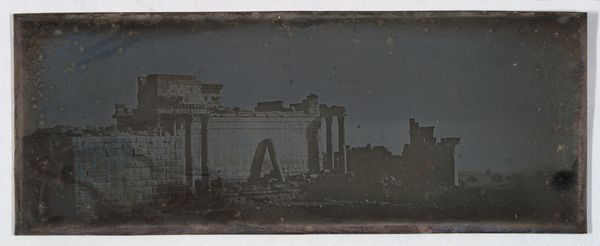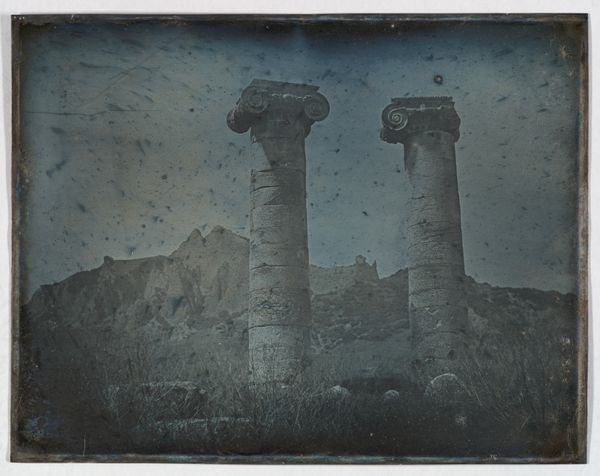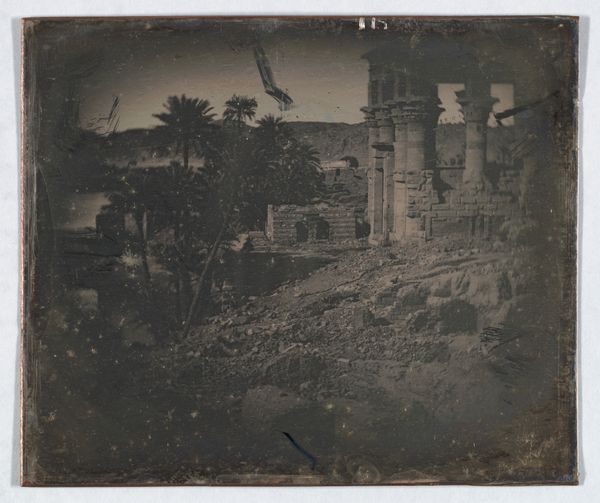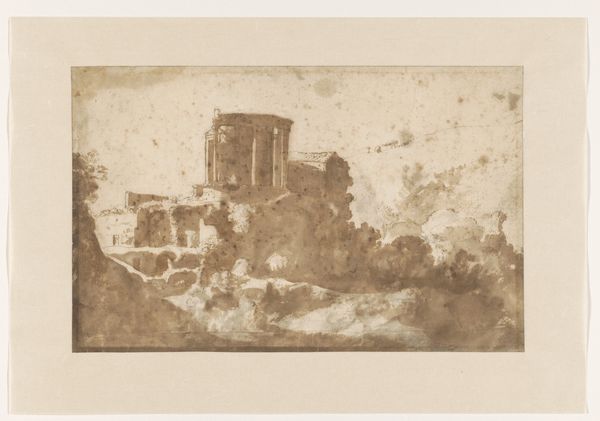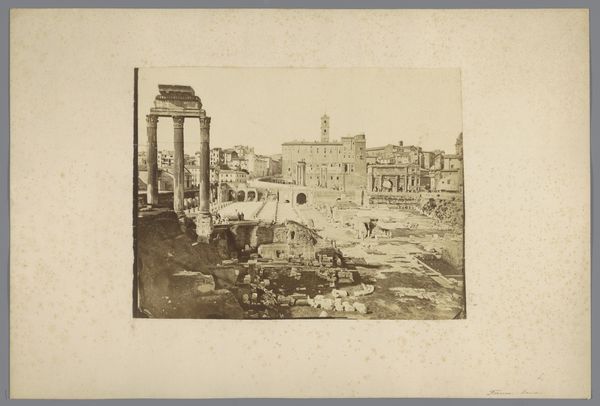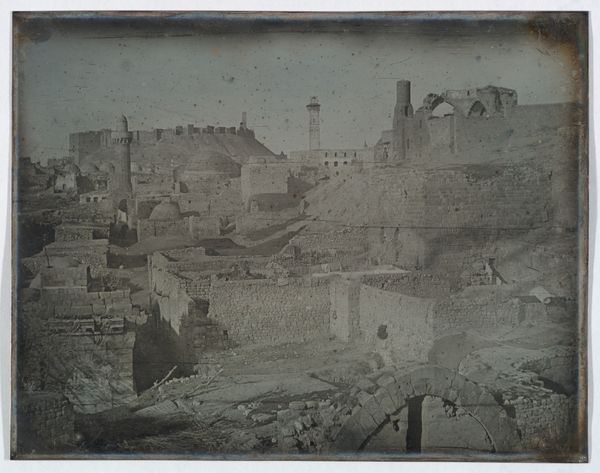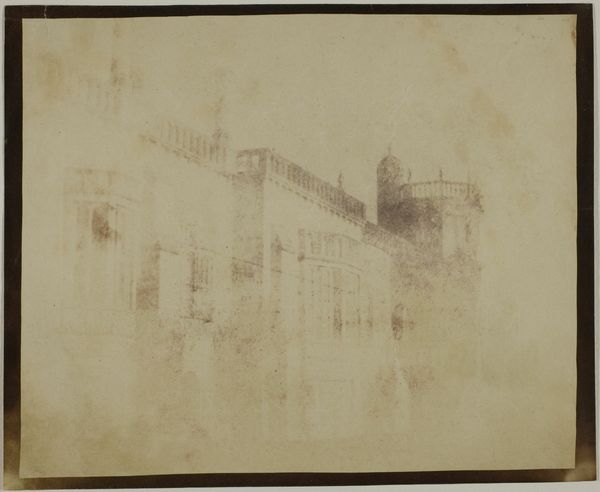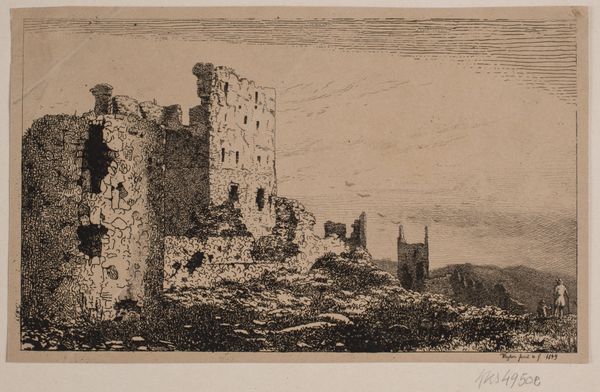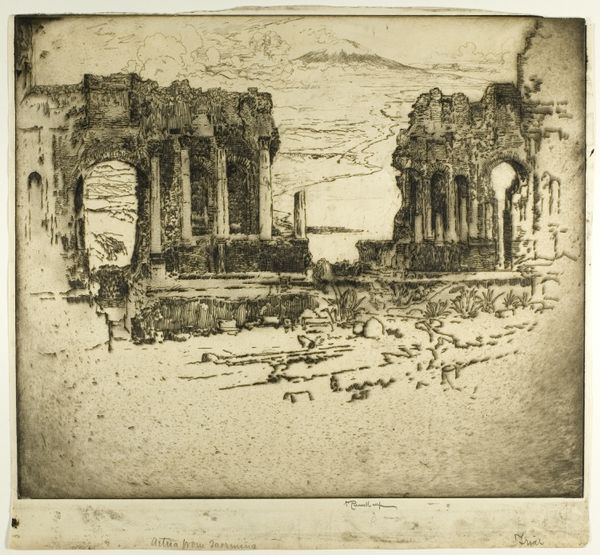
Western Approach to the Acropolis, Athens (49. Athènes. 1842. Acropole. Côté O.) 1842
0:00
0:00
daguerreotype, photography, architecture
#
greek-and-roman-art
#
landscape
#
daguerreotype
#
photography
#
arch
#
cityscape
#
architecture
Dimensions: Image: 3 11/16 × 9 1/2 in. (9.3 × 24.1 cm)
Copyright: Public Domain
Curator: Today, we are looking at Joseph-Philibert Girault de Prangey's 1842 daguerreotype, titled "Western Approach to the Acropolis, Athens." It offers a captivating glimpse of the Acropolis in the mid-19th century. Editor: My god, it’s like looking at a ghost of time, isn't it? This dreamy haze clinging to the stone feels like memory itself trying to hold on. Curator: Indeed. Notice how the composition is meticulously structured. The Acropolis is presented as a solid geometric form dominating the landscape, positioned with precision. Editor: You know, it almost feels prophetic. All those sharp lines are softened into blurry premonitions—what once was perfect rendered wonderfully fragile and crumbling. Gives me chills, really. Curator: Consider too the materiality of the daguerreotype. The metallic surface and delicate tonal gradations create a stark yet ethereal quality. Semiotically, this evokes both the monumentality of the subject and its historical distance. Editor: Totally. There’s such beautiful imperfection in this old photography technique, and the smudges and silvering are as telling as the architecture itself. The scene isn’t sharp; instead, it leaves everything open to imagination and interpretation. Curator: Girault de Prangey employs a unique perspective, capturing the site from a specific angle that emphasizes the Acropolis's commanding presence. This perspective highlights not only its architectural form but also its place within the broader topographical context. Editor: Which in turn begs the question: Was it just about documentation, or was he actively weaving feeling in through image-making? I think its dreamlike quality is hard to deny. To think how he physically hauled all of his kit up there to make this photograph. Mad respect. Curator: The use of light and shadow also warrants our attention, strategically employed to define contours, textures, and spatial relationships. It lends to our understanding of the artwork as a study in time and the sublime. Editor: It definitely whispers more than shouts, wouldn't you say? And isn't that more exciting somehow? So often history just tells you the ‘what,’ but rarely the ‘how it *felt*. ' Prangey gets that here. Curator: I agree. I think by analyzing the formal elements and the historical context, we begin to truly appreciate the enduring impact of "Western Approach to the Acropolis, Athens." Editor: It's true, isn't it? When you really stare into this thing you don't just see a building on a hill but almost taste the dust, hear the wind. It’s kind of magic.
Comments
No comments
Be the first to comment and join the conversation on the ultimate creative platform.
